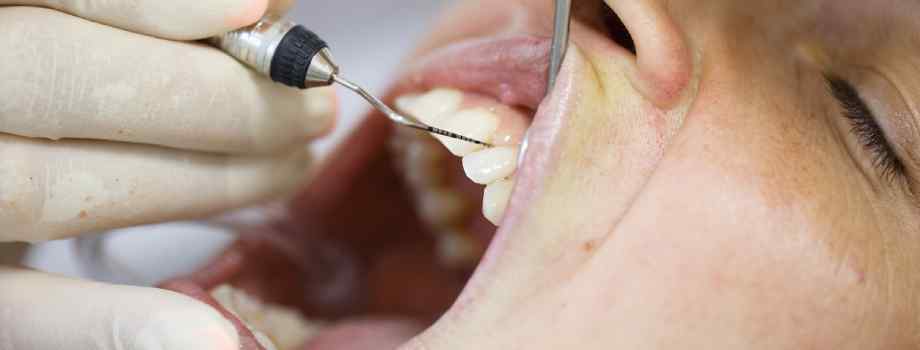When the gums have receded, it indicates that the line of gum tissue that is situated around the teeth has started to pull back. In turn, this causes a larger amount of the tooth to be exposed.
In some instances, it exposes the root of the tooth. The recession results in gaps forming between the gum tissue and the teeth. These gaps are referred to as “pockets”.
Harmful bacteria – that has the potential to cause disease – becomes lodged in these gaps. In turn, the teeth and surrounding structures may become damaged.
In this guide, you will learn about what causes the gum tissue to recede.
Potential Causes
There are several potential causes behind gum recession. The following outlines the most common culprits:
- Improper Brushing Techniques – Many individuals develop gum recession due to the manner in which they brush their teeth. The most common improper brushing technique is brushing the teeth with too hard of a bristle or using too much force while brushing. When this is done, the enamel wears and the gum tissue may start to recede, which results in many oral health problems.
- Poor Oral Hygiene – In addition to improper brushing techniques, poor oral hygiene may also cause the gums to recede. Examples of poor habits include not brushing the teeth enough, not flossing at least once a day, and not using a mouth wash that contains antibacterial properties. This could cause tartar to develop and push the gum tissue down.
- Genes – In a high percentage of cases, an individual may have a genetic predisposition of developing gum recession.
- Fluctuations with Hormone Levels – If you are a female, you experience several fluctuations with your hormones over the course of your lifetime. These include during the onset of puberty, during pregnancy, and before, during, and after menopause. These fluctuations could result in the development of gum recession.
- Force – If you clinch your teeth or grind your teeth, it could place a high level of force on the teeth. When this happens, gum recession may develop.
- Uneven Teeth – If the teeth are misaligned or crooked, it could place inappropriate force on the supporting bone structures and the teeth. This could allow the gums to start the process of recession.
- Tobacco Usage – When tobacco products are used, a very sticky type of plaque may become adhered to the teeth. As a result, the gums may start to recede.
- Body Piercings – Body piercings in and around the mouth could irritate the gum tissue and result in them receding.
How Can I Treat Gum Recession?
In some instances, gum recession may be treated by the simple act of professional deep cleaning. In other instances, surgery may be performed.
One example of treatment is soft tissue grafting in Wichita. Other treatments may include open flap scaling, and regeneration.
If you would like to resolve a gum recession, contact us today for assistance: 316-683-2525

